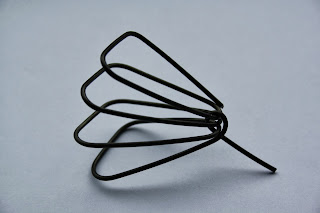Paul Strand
I like how Paul Strand has used the shadows in this photograph because it makes what would otherwise be quite a bland image into something much more interesting with lots of different shapes and angles within it. The lack of colour emphasises these shapes and helps to show what beautiful patterns can naturally be made by blocking out sections of light. I also like how the areas of light and shadow make the image become quite abstract making it unclear what the object is so you focus on the shadows and patterns made.
Russ and Reyn
Russ and Reyn's photograph is a much more modern and quirky use of shadows. I think the simplicity of the composition is successful because it is the creative idea of using the shadow in this way which really makes the image effective in my opinion, so there's no need to complicate it with the composition too.
Henri Cartier-Bresson
This photograph by Henri Cartier-Bresson appeals to me because of the way he has used the shadows. The profile of the person on the chair gives the image a creepy feeling as it seems like someone unknown is watching the chair and waiting. Because you can't see their features it feels more anonymous, like they are hiding their identity. I also think the use of shadows in the background is successful because it just gives the image a few more interesting shapes to look at. Because they make the background slightly darker too, it makes the white chair in the sun stand out even more so it's obviously the main focus of the image.











